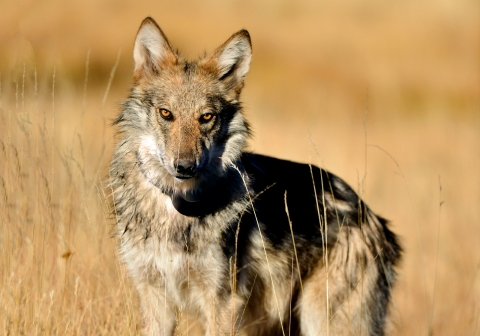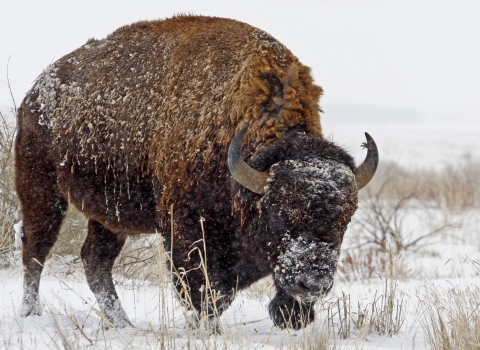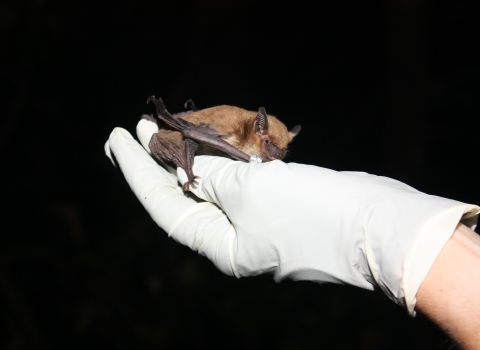This year marks the 25th anniversary of the reintroduction of Mexican wolves to the wild in the United States. In those 25 years, the wild population has grown from zero to a minimum of 241 Mexican wolves in 2022. Spread across southwest New Mexico and southeast Arizona, the population of Mexican wolves has been increasing for seven consecutive years, with about 60 known packs documented. For a subspecies once thought extinct in the U.S., the revival of the Mexican wolf is truly a comeback story.
However, to fully understand the significance of this comeback, we must go back farther than 25 years.
On the Brink of Extinction
The story of the Mexican wolf is a familiar one for predators in the west. Prior to European colonization of the Americas, wolves roamed extensively across the lower 48 states. The Mexican wolf, a subspecies of the gray wolf, adapted to the warmer and more arid climates of New Mexico, Arizona, Texas, and northern Mexico. At their apex, thousands of Mexican wolves (aka “lobos”) populated the southwest, mostly in or near forested, mountainous terrain.
As human settlement intensified in the early 1900s, Mexican wolves were targeted for extermination over fears they would prey on livestock. Throughout the 20th century, wolves were shot, trapped, and poisoned by both private individuals and government agents. By the 1970s, these eradication efforts left Mexican wolves nearly extinct in the wild, with the last confirmed Mexican wolf sighting in the U.S. occurring in 1970.
“We came very close to losing the Mexican wolf forever,” said Brady McGee, Mexican Wolf Recovery Coordinator for the U.S. Fish and Wildlife Service.
Endangered Species Act Listing
When the Endangered Species Act was enacted in 1973, wolves were among the first species to be put on the list. Having stood on the precipice of extinction, the ESA not only halted the killing of wolves across the country but also called for actions to restore their numbers. The Mexican wolf was officially listed under the ESA in 1976 as endangered. The listing mandated the U.S. Fish and Wildlife Service protect the Mexican wolf and draft plans for its recovery.
At the time of listing, however, there were no known Mexican wolves living in the U.S. and numbers in Mexico were dwindling fast. This meant a path forward for recovery depended on finding enough Mexican wolves to begin a captive breeding program.
Under an agreement between Mexico and the U.S., five Mexican wolves (four males and one pregnant female) were captured in Mexico between 1977-1980 and brought to the U.S. These wolves, known as the McBride lineage, formed the basis for the Mexican wolf captive breeding program. Two additional lineages in captivity were managed separately -- the Aragon and Ghost Ranch lineages -- until advanced DNA analysis proved they were pure Mexican wolves.
The three lineages were combined in 1995, giving a much-needed genetic boost to Mexican wolves and raising the total number of founders to seven.
Ready for Reintroduction
Two years later, the Service was ready to reintroduce Mexican wolves to a portion their historic range in Arizona and New Mexico. In 1998, three family groups of Mexican wolves were released in the Apache National Forest in eastern Arizona. Additional releases followed, and the restoration of Mexican wolves in the wild was underway. In 2002, the birth of the first wild-born litter from a wild-born parent occurred in the U.S., at which point natural reproduction in the wild began to slowly reduce the need for releases from captivity to promote population growth. In 2011, efforts to establish second population in Mexico began with the release of five Mexican wolves in Sonora.
“Recovery is on the horizon for this subspecies,” said McGee. “With the help of our partners we continue to move the needle of conservation toward self-sustaining populations, so that one day, Mexican wolves will no longer need the protections of the ESA.”





